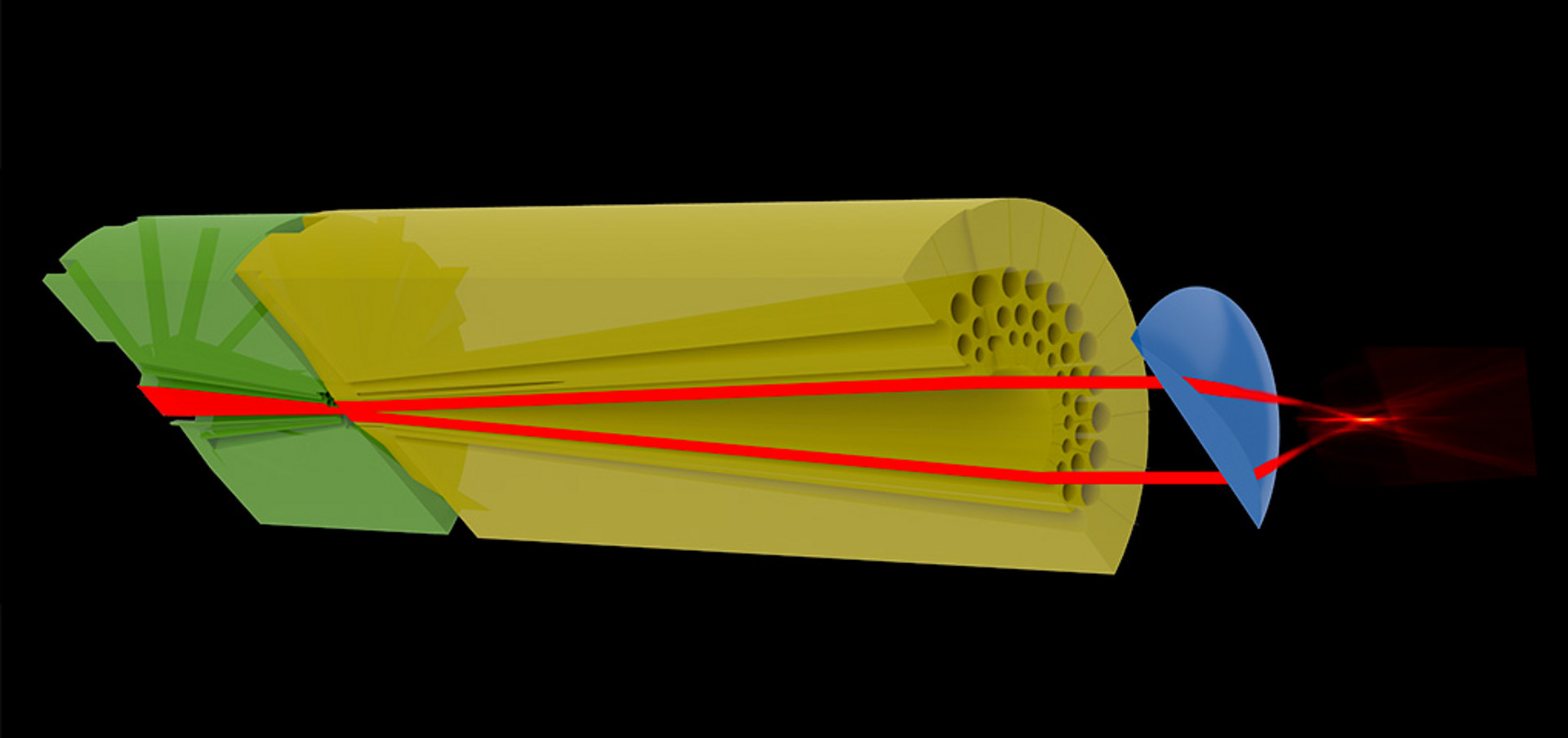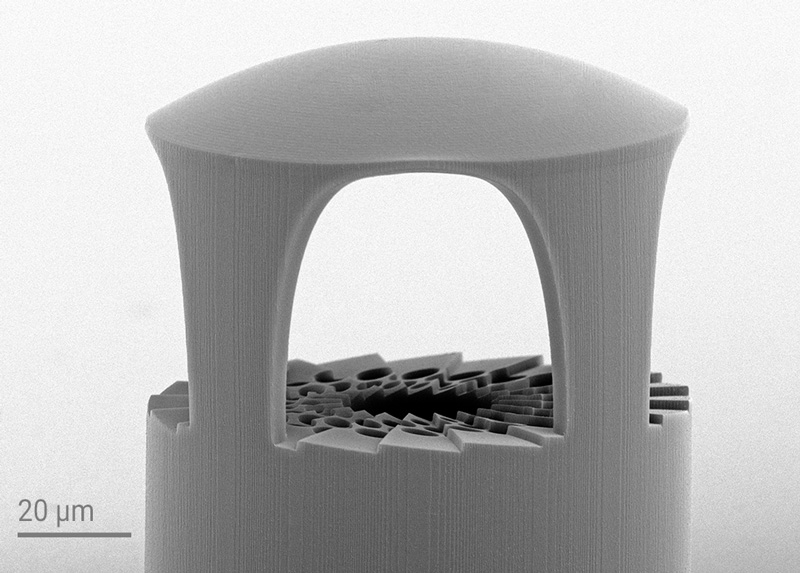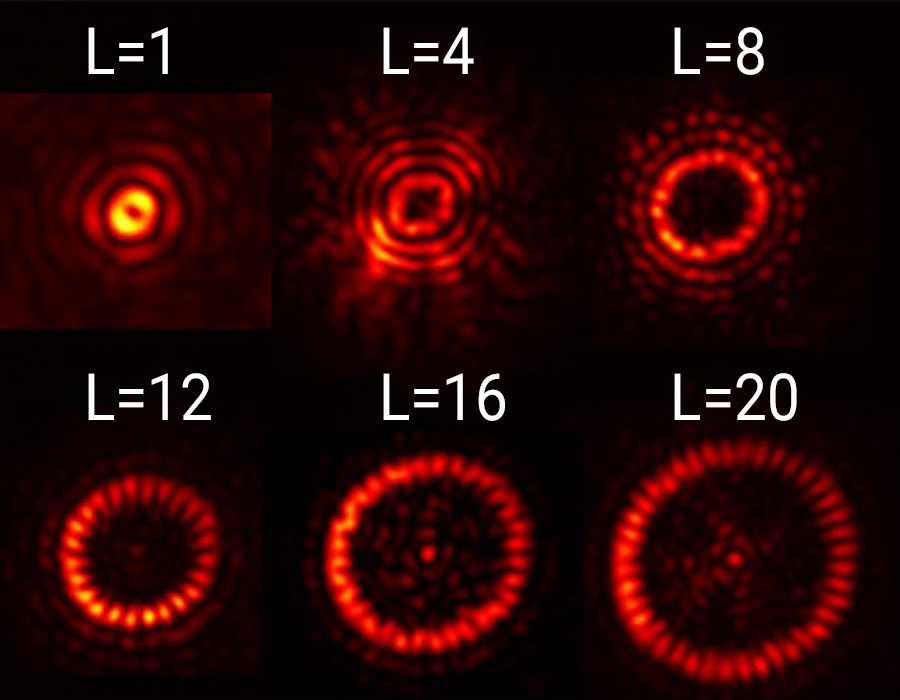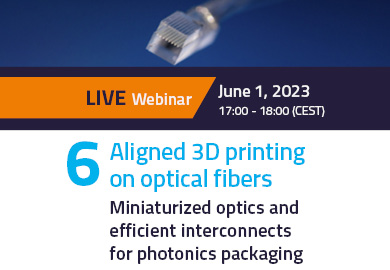The special behavior of Bessel beams can make them a good choice for various optical applications ranging from communications, optical trapping to imaging. If you see the cross-section of a Bessel beam, you will identify a set of concentric circles or rings, where the innermost circle of the beam can remain focused over a longer extension than a typical Gaussian beam. If a Bessel beam is partially obstructed by an object, the Bessel beam is able to reconstruct itself after passing through it. However, to transform a circular beam into a number of rings requires special optics such as a cone-shaped refractive material, called axicon, or hologaraphic beam-shaping methods. To overcome the limitation of the yet space-consuming optics required for these methods, fiber-based generation of Bessel beams has already been investigated. However, these fiber-based solutions were limited when it came to tuning the optical beam parameters and only provided zeroth-order Bessel beam generation. Scientists from the King Abdullah University of Science and Technology in Saudi Arabia developed a new approach to fabricate a photonic structure consisting of stacked microoptical elements. They 3D-printed the structure directly on the fiber facet to achieve the generation of zeroth-order and vortex Bessel beams from optical fibers.
New approach with on-fiber 3D printing
A novel fabrication strategy is based on Two-Photon Polymerization which enables the fabrication of complex 3D photonic structures. For this application, the fabrication of the photonic structure designed to generate Bessel beams, was realized on an optical fiber and aligned to the core of the fiber. The use of Nanoscribe’s IP-Dip photoresin offered the high spatial resolution needed to produce photonic crystal fiber designs to manipulate the light beam. The microfabrication strategy enabled to fabricate the microoptical elements with a low surface roughness. The 3D-printed microoptical elements demonstrated beam transformation with high efficiency and low transmission loss.
Rapid prototyping of compound microoptics
2PP-based 3D printing enables to create advanced 3D microoptics, which can consist of arbitrarily shaped complex microoptical elements, such as the Bessel beam generator. The fiber-based photonic structure consists of three microoptical elements that are aligned to each other and to the underlying fiber facet. The individual elements are seamlessly integrated. The 2PP technology allows to adapt the photonic structure design straightforward according to the desired customized optical parameters. Thus, the rapid prototyping of such compound photonic structures enables fast design iteration cycles when changing the design as required for specific applications. It is the flexibility of 2PP-based 3D printing that enables the tailored Bessel beams that can be used in endoscopy, e.g. for optical coherence tomography, fiber-based optical trapping and micromanipulation.
Towards nanoprecision 3D alignment with Aligned 2-Photon Lithography
The fiber-based photonic structure for Bessel beam generation requires to print microoptical elements precisely aligned to the optical axis of the fiber. The new generation of Quantum X align systems can perform this task faster, easier, more precisely and with higher shape accuracy than any other 2PP-based 3D printers. That’s because Quantum X align is based on a state-of-the-art platform and features Aligned 2-Photon Lithography A2PL® for highly accurate placement of printed structures. Thus, optimized hardware and software allow to print complex 3D microoptics elements on optical fibers with submicron accuracy.
Interested to explore more the fabrication and performance of the fiber-based Bessel beam generator? Read the open-access scientific publication here: 3D-printed fiber-based zeroth- and high-order Bessel beam generator
This and further scientific publications on more than a thousand research projects from Nanoscribe customers and system users can be found in a powerful database with a keyword search in the Premium Resources section. Register for free to see for yourself the potential of Nanoscribe’s 3D Microfabrication technology for innovative applications and fundamental innovations in many areas, and to evaluate its suitability for your project.





